So far, in covering our Best and Worst Trades by Point Shares, we’ve focused on either the best or worst for each franchise. However, the Original Ottawa Senators are a special case. The most successful early hockey franchise, they existed for decades before the NHL existed, but then they only made it to the 1930s.
So, there are two issues with creating this list:
The first is that there aren’t that many NHL trades compared to the Original Six franchises.
The second is that, due to the length of the season at the time, the trades didn’t result in huge point share increases or decreases.
So we’ve combined the two into one post. See the methodology in how we rank trades here.
The Top 4 Original Ottawa Senators/St. Louis Eagles Trades of All Time
There are so few good trades to discuss, we decided to cut off the list at +5 Point Shares gained by the Senators. It’s a really short list. And some of these aren’t even trades.
4. Art Gagne – 5.6 PS
Senators get: Art Gagne – 5.6 PS (25G, 14A for 39P in 74 GP)
Bruins get: cash
On December 21, 1929, the Bruins traded winger Art Gagne, who they had recently acquired from the Canadiens, to the Senators for cash.
Gagne played less than two seasons for the Senators but the second was better than the first. We’re working with very little here.
Like Touhey (below), Gagne left the Senators when they suspended operations in September 1931.
3. Bill Touhey – 8.8 PS
Senators get: Bill Touhey – 8.8 PS (34G, 21A for 55P in 132 GP)
Maroons get: cash
On October 25, 1928 the Montreal Maroons traded young winger Bill Touhey to the Senators for cash.
Touhey was never a star. But he was decent for the Senators for a few seasons. That’s the standard for good trades with this franchise, at least in its NHL incarnation.
He found his way to the Bruins when the Senators suspended operations. (He went back to the Senators after that but we decided to leave out those additional point shares because we’re not sure how he got back.)
2. Sprague Cleghorn – 10.7 PS
Senators get: Sprague Cleghorn – 10.7 PS (25G, 16A for 41P in 42 GP)
Wanderers get: nothing
We’re cheating here but we have to given how . On January 4, 1918 the Montreal Wanderers, which was a 15-year-old franchise, disbanded. They disbanded because their arena had burned down and, prior to that, they had lost every game they played in the new NHL.
Cleghorn had been on the Wanderers for since 1911. It seems like he and his brother had already decided to leave the team before the dispersal draft that is how the Senators acquired him.
After the draft, Cleghorn immediately paid dividends. He led the NHL in Defensive Point Shares in his first season. And he helped the Senators to two Stanley Cups. (Though, the story of that 2nd Stanley Cup is a weird one and that Cup doesn’t really fall into this acquisition given what happened with the St. Patricks.)
He was transferred to Toronto in December 1920. And though he played for the Senators in the Cup, his rights passed to Hamilton and then to Montreal by the next season. (The early NHL was really weird.)
1. Reacquiring Punch Broadbent – 11.2 PS
Senators get (back): Punch Broadbent – 11.2 PS (59G, 18A for 78P in 79 GP)
Canadiens get: nothing
On February 21, 1921 the Senators got Harry “Punch” Broadbent back after they had attempted to transfer his contract less than months earlier.
The Senators signed Broadbent after his return from World War I. He was nearly 27. Nearly two years later, the Senators traded him to the Hamilton Tigers. However, Broadbent refused to report. So the Tigers traded him to the Canadiens nearly two months later. Again, Broadbent refused to report. So he found his way back to the Senators, the team he had played for since 1912 (and won two Stanley Cups in the process).
It was lucky for the Senators that they got him back. In 1922, Broadbent was the NHL’s best player and should have won the MVP had it existed.
He also helped them win two more Stanley Cups before they sent him to the Maroons in 1924 when he was in his 30s.
So that was about all we could find for the best trades (really, transactions), so here are the worst:
The 11 Worst Original Ottawa Senators/St. Louis Eagles Trades of All Time
With a cutoff of more than a net -5 Point Shares, there are 11 transactions that make the list.
11. Al Shields – (5) PS
Eagles get:
- Irv Frew – 1.6 PS (2A for 2P in 48 GP)
- Future Considerations:
- Vern Ayres – 2 PS (2G, 2A for 4P in 47 GP)
- Normie Smith – 0 PS (0 GP)
Maroons get: Al Shields – 8.6 PS (6G, 15A for 21P in 87 GP)
On September 20, 1934, about five months after the Senators had become the St. Louis Eagles, they traded long-time D Allan Shields for Irv Frew and future considerations.
Irv Frew and Vern Ayres sent to complete the trade played only one season for the Eagles because they folded. (Supposedly this has as much to do with having to pay to send the team by train to play in other arenas in the Canadian division, as it did with revenue.)
Shields only played two seasons initially for the Maroons. But that plus his higher scoring makes it a win for the Maroons. He was loaned to the Americans in 1936, and then the Bruins, but finished his career with the Maroons. (We’re not including his final year with the Maroons because the details of the loans are unclear.)
10. Bob Gracie for Hec Kilrea – (5.8) PS
Senators get:
- Bob Gracie – 0 PS (0 GP)
- Cash
Maple Leafs get: Hec Kilrea – 5.8 PS (21G, 26A for 47P in 89 GP)
On October 4, 1933, the Senators sold their former star, who had lead the 1930 team in points, to the Maple Leafs. This was done in part due to financial struggles at the time. The Leafs’ owner had actually offered to bring the Senators to Toronto as a second team but the Senators couldn’t afford it.
The same day, the Senators traded Gracie, whom they got along with the cash, for three players. That trade did not work out for the Senators either.
Kilrea was hardly a star for the Leafs. But he did actually score. They moved him to the Red Wings two years later.
9. Loaning Bill Beveridge – (7) PS
Senators get: cash
Cougars get: one season of Bill Beveridge – 7 PS (14-20; 2 SO; 2.71 GAA in 39 GP)
On November 27, 1929 the Senators loaned their new goalie to the Cougars, before he had ever played a game for them.
Beveridge was hardly a star for the Cougars, but he was their starting goalie. Giving up a starting goalie to another franchise is a bad idea, even if it’s only for one year.
Beveridge returned to the Senators after the loan and eventually became the final starting goalie in franchise history.
8. Losing Alec Connell the first time – (9.5) PS
Senators get: nothing
Falcons get: one season of Alec Connell – 9.5 PS (18-20; 6 SO; 2.13 GAA)
One of the players the Senators relinquished during their one year suspension for the 1931-32 season was Alec Connell, arguably one of the greatest goalies in NHL history up to that point.
For the Senators, he had already led the league in GAA once (and GPS, not that this statistic existed) and Shutouts three times. He was coming off the worst season of his career so far but the two previous years he had led the league in Minutes.
For Detroit, he led the league in Minutes and Losses. He returned to the Senators when they resumed operations. For the next part of Alec Connell’s story, see the very next transaction.
7. Losing Alec Connell the final time – (13.6) PS
Senators get: Future Considerations (Glenn Brydson) – 2.8 PS (11G, 18A for 29P in 48 GP)
Maroons get: Alec Connell – 16.4 PS (34-30-11; 11 SO; 1.99 GAA)
Connell’s return to the Senators did not go so well. Partway through the season after he played for the Falcons he got injured and essentially became the team’s backup as a result. On Boxing Day 1932 he announced his retirement due to this new role.
He didn’t play the next season and the Senators tried to trade him to the Maroons but the deal feel through because the Senators wanted money and a player. Instead, he was briefly loaned to the Americans (for a single game).
Finally, after the Senators planned to move to St. Louis but before the next season started, the Senators/Eagles traded Connell to the Maroons for future considerations. A couple of weeks later, they got mid-20s RW Glenn Brydson as compensation.
Brydson had a career year for the Eagles. However, the Eagles then ceased to exist, so he didn’t have a chance to have a longer career for them.
Meanwhile, Connell only led the league in shutouts and led the Maroons to their second and final Stanley Cup. Connell won every game and led the playoffs in shutouts.
Connell retired as a Maroon.
6. Burr Williams for Normie Smith – (31.7) PS
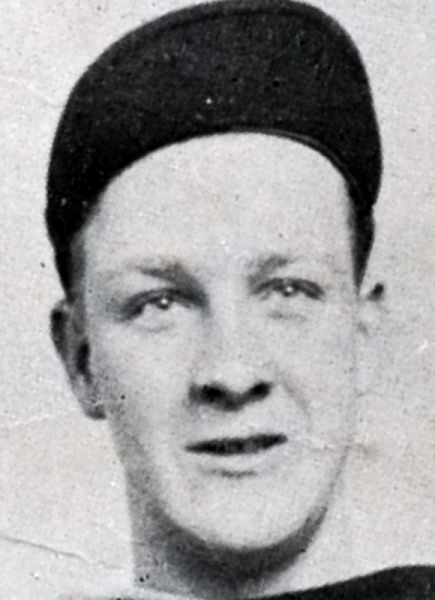
- Senators get: Burr Williams – 0.3 PS (0P in 9 GP)
- Red Wings get: Normie Smith –
The same day the Senators/Eagles received compensation for giving Alec Connell to the Maroons, they traded one of the players they got as future considerations in the above Shields trade to the Red Wings for D Burr Williams.
Neither player was marquee: both had failed to find regular playing time in their first seasons in the league. But the bet that Williams was better than Smith didn’t even have to wait for the Eagles to fold before it didn’t pay off. St. Louis traded Williams to the Bruins 9 games into the season.
Meanwhile Smith became the Wings’ starter the next season. In 1935-36, he led the league in Wins, Minutes and Games Played. And the next season he won the Vezina, leading the league in Wins, Shutouts, GAA, Ties and Games Played, as well as making the 1st All Star Team. Smith led the Wings to their first two Stanley Cups as a franchise, which they won back-to-back.
Oops.
5. Lionel Hitchman
Senators get: cash
Bruins get: Lionel Hitchman – 36.3 PS (25G, 27A for 52P in 378 GP)
Hitchman was apparently unhappy with his role on the Senators and requested a trade…in 1925. Even though he had led the league in Assists the season prior, the Senators figured they had someone else on the roster who could cover, so they traded him for cash.
Hitchman played the rest of his career – an entire decade – for the Bruins. A defensive defenseman, we don’t have offensive stats to discuss. But he did help the Bruins to a Stanley Cup in 1929.
4. Role players and cash for King Clancy – (38.6) PS
Senators get:
- Eric Pettinger – (0.6) PS (0P in 13 GP)
- Art Smith – 1.7 PS (2G, 4A for 6P in 43 Games)
- Cash
Maple Leafs get: King Clancy – 39.7 PS (52G, 78A for 130P in 286 GP)
During the midst of what was arguably already a Hall of Fame career, including a Stanley Cup and three Top 5 Hart finishes, and immediately after the best offensive season of his career, the Senators traded King Clancy for two guys who had played some NHL games. Why?
Well, the “cash” above was $35,000, which was an awful lot of money in 1930. But the hockey return was not very good.
Pettinger was young enough, but had put up no points in his initial stint with the Bruins but scored some points for the Leafs. Smith was younger with slightly more pedigree – a D with a much higher PPG in his first season in the NHL. However, since that point, he scored at a similar rate to Pettinger (still making him the bigger prize in this deal).
Both Petting and Smith managed only one season for the Senators and Pettinger only 13 games.
Meanwhile, King Clancy continued his Hall of Fame career. His first season with the Leafs, he finished Top 3 in Hart voting and made 1st Team All Star. In total with the Leafs he made two 1st Teams and two 2nd Teams and finished Top 3 in Hart voting twice. In 1932, Clancy helped the Leafs to their first Stanley Cup in a decade.
Clancy retired a Leaf and he is considered one of the couple best D in the early years of the NHL.
3. Broadbent for Holley Smith
Senators get: Punch Broadbent – .3 PS (3G, 2A for 5P in 43 GP)
Maroons get: Hooley Smith – 47.4 PS (130G, 151A for 281P in 388 GP)
On October 7, 1927, the Senators reacquired their old star, Punch Broadbent, for former Hart-nominee Hooley Smith, who was coming off a down year.
Broadbent had once been the star (or one of the stars) of the best franchise in hockey. He had helped the Senators to three Stanley Cups and he was the best player in the NHL in 1921-22.
However, in 1924 they had traded him to the Maroons (see the next trade on this list). Broadbent had helped the Maroons to a Cup in 1926 but by the date of this trade he was 35.
Smith had helped the Senators to the Cup in 1927. The season prior, while Broadbent was helping the Maroons to the Cup, Smith was 4th in Hart Trophy voting.
But the season Smith won the Cup with the Senators had been the worst season of his career and he didn’t have the best playoff. However, Smith was 11 years younger than Broadbent.
Broadbent’s return to his old team didn’t workout well and he was traded to the Americans a year later.
Hooley Smith became the best forward for the Maroons. While he was on the team, Smith was first in Assists (by 55!), first in points (by 67!) and second in Goals. He scored 20 goals twice (at a time when it didn’t happen that much), finished 2nd in Hart Trophy voting once, made one 1st All Star team and one 2nd. He helped the Maroons to their second and final Stanley Cup. He was traded to the Bruins after nine seasons.
2. Benedict and Broadbent for cash
Senators get: cash
Maroons get:
- Clint Benedict – 39.6 PS (92-84-25; 38 SO; 1.77 GAA)
- Punch Broadbent – 10.2 PS (35G, 17A for 52P in 108 GP)
On October 20, 1924, the Senators traded their starting goalie and one of their best forwards for…money. Broadbent was already pretty old when the Senators got rid of him; he was 32. And he didn’t have a great year the previous season.
And Benedict had his worst season since his first season in the NHL, only leading the NHL in wins and shutouts, instead of the usual. (From 1918-23, Benedict was, by any standard, the best regular season goalie in the NHL.)
To get nothing but money for both of these players seems inconceivable. (Remember, Broadbent had been the best forward in the league in 1921-22.) But there were extenuating circumstances in Benedict’s case.
Regardless, it was a bad deal.
As mentioned above, Broadbent helped lead the Maroons to their first Stanley Cup, leading the NHL playoffs in Points. (Though he didn’t score in the actualy Stanley Cup finals.) He returned to the Senators in the above trade.
Benedict contributed even more to that Cup, leading the NHL playoffs in Wins, GAA, Shutouts, Minutes and Games. The season before, he finished 3rd in Hart Trophy voting. And while he was with the Maroons, he led the league in Minutes once and GAA once. In 1926-27, he was the most valuable goalie in the NHL by Goalie Point Shares (for the sixth time in his career). He retired a Maroon in 1930.
1. Ted Graham for Syd Howe – (58) PS
Senators get:
- Teddy Graham – 0.3 PS (0P in 12 GP)
- cash
Red Wings get:
- Syd Howe – 45.2 PS (188G, 248A for 436P in 515 GP)
- Ralph “Scotty” Bowman – 13.1 PS (6G, 13A for 19P in 204 GP)
On February 11, 1935, the St. Louis Eagles traded 22-year-old, well-travelled forward prospect Syd Howe, in the midst the best season of his career, and the equally young D, Ralph “Not that Scotty” Bowman for veteran D Ted Graham and the usual cash this struggling franchise was always asking for.
Graham was a well-travelled D, who had played nearly 200 games for the Black Hawks before brief stints with the Maroons and Red Wings. But this trade was clearly about injecting cash into the struggling Eagles, who folded at the end of the season.
Bowman his entire career – a season and a half – with the Senators/Eagles. Howe had a much weird route: starting out with the Senators, he was loaned first to the Quakers and then to the Leafs before he made the Senators full time. Before the trade he had scored 27 points in 36 games (a lot for the 1930s) so, again, this trade was about money.
Bowman had a fine rest of his career, retiring from the NHL as a Red Wing in 1940. Before that, he helped Howe and the Red Wings to back-to-back Stanley Cups. (Yes, the same Cup teams that Normie Smith was on. Yes, the Senators gave the Wings three of their most important players.)
But Howe obviously played a much bigger role. He led the Red Wings in Goals (by over 40), in Assists (by over 100!) and Points (by over 150!!!) while he was there. He finished Top 5 in Hart voting three times and made one 2nd All Star Team. (Yes, that doesn’t necessarily make sense. The voters do weird things.) He won three Stanley Cups, the two mentioned above and a third Cup after Bowman and Smith retired. And he led the playoffs in Assists one season.
At his retirement in 1946, Howe was the all time leader in points in NHL history.
Obviously, given the Eagles’ finances, they couldn’t have kept Syd Howe. But, had the franchise somehow been able to continue, this would have been a disaster. Had he stayed, he would rank among the greatest Senators of all time and that’s saying something for this franchise.

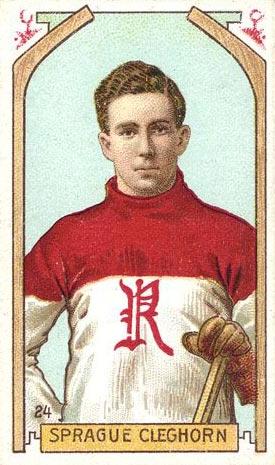
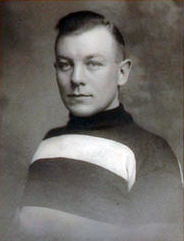
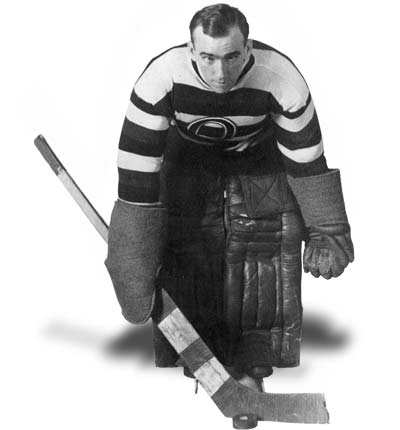




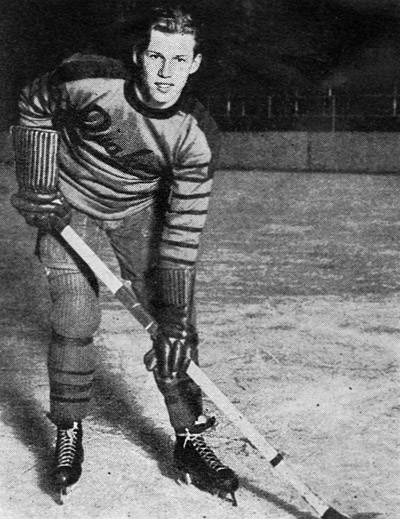
One thought on “Best and Worst Original Senators Trades of All Time”